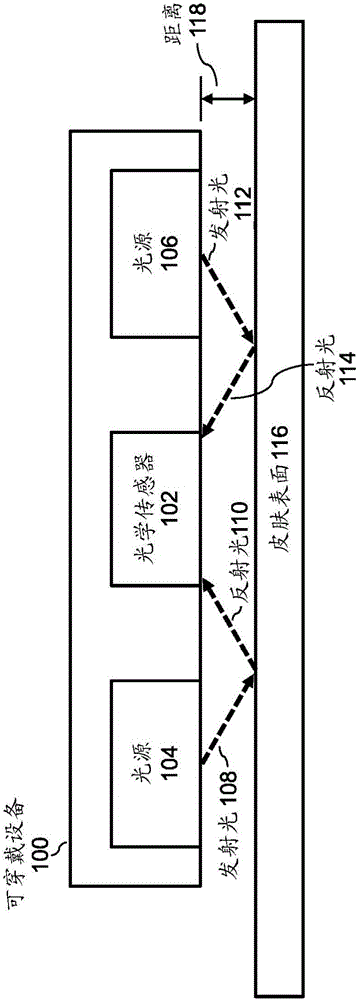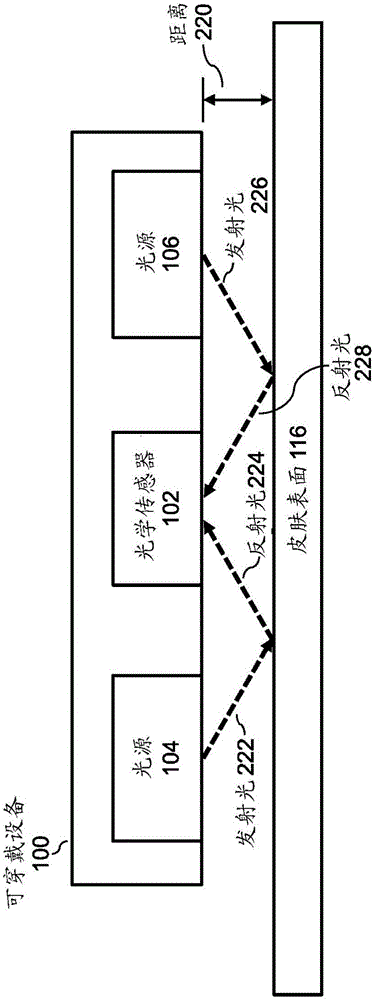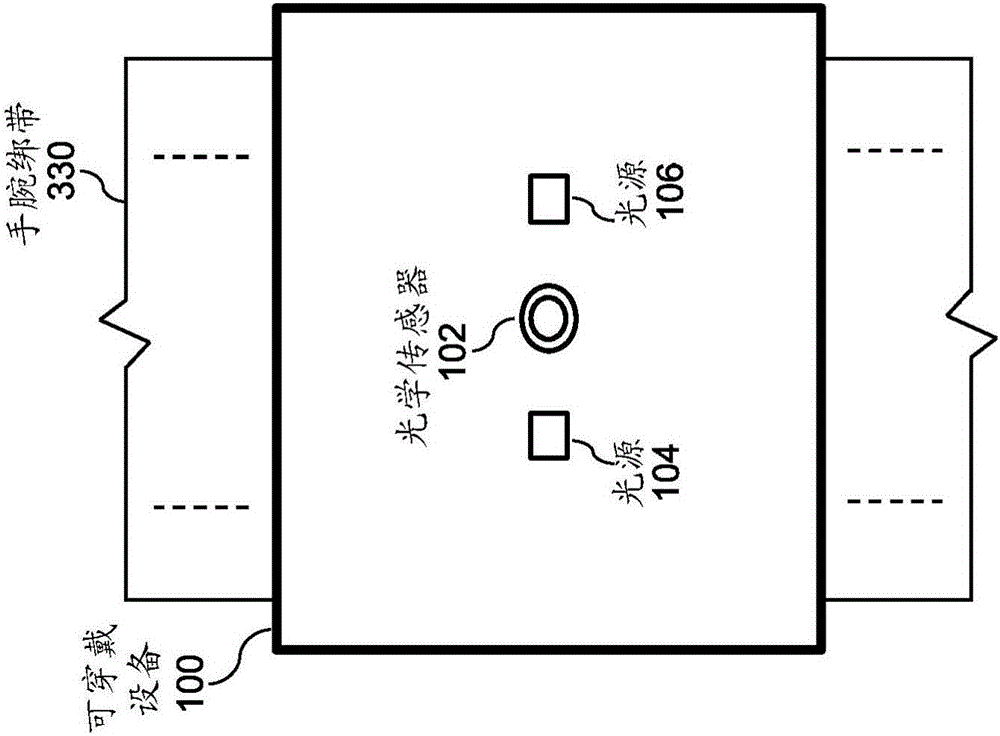Motion gesture input detected using optical sensors
An optical sensor and gesture technology, applied in the field of optical sensors, can solve problems such as device interaction limitations
- Summary
- Abstract
- Description
- Claims
- Application Information
AI Technical Summary
Problems solved by technology
Method used
Image
Examples
Embodiment Construction
[0021] In the following description of the examples, reference is made to the accompanying drawings, in which are shown by way of illustrations specific examples that may be practiced. It is to be understood that other examples may be utilized and structural changes may be made without departing from the scope of the respective examples.
[0022] This involves wearable devices with optical sensors that can be used to recognize gestures of the user wearing the device. In one example, one or more light sources may be positioned on the back or skin-facing side of a wearable device such as a watch, wristband, armband, legband, chestband, headband, or the like. Optical sensors can be positioned near one or more light sources on the same side of the wearable device. During operation, light may be emitted from one or more light sources and sensed using optical sensors. Changes in sensed light caused by movement of a user wearing the device can be used to recognize user gestures. F...
PUM
 Login to View More
Login to View More Abstract
Description
Claims
Application Information
 Login to View More
Login to View More - R&D
- Intellectual Property
- Life Sciences
- Materials
- Tech Scout
- Unparalleled Data Quality
- Higher Quality Content
- 60% Fewer Hallucinations
Browse by: Latest US Patents, China's latest patents, Technical Efficacy Thesaurus, Application Domain, Technology Topic, Popular Technical Reports.
© 2025 PatSnap. All rights reserved.Legal|Privacy policy|Modern Slavery Act Transparency Statement|Sitemap|About US| Contact US: help@patsnap.com



